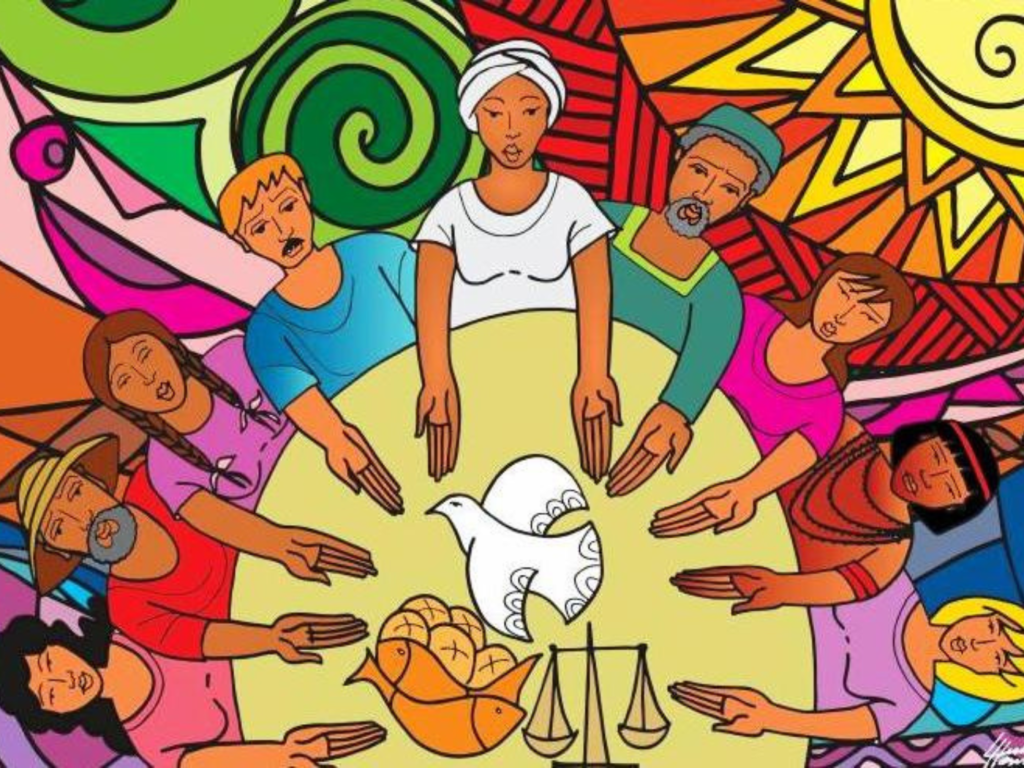
Petrine primacy and synodality
Pope Francis has affirmed that “it is precisely this path of synodality which God expects of the Church of the third millennium.” “Synodality is a constitutive dimension of the Church. We cannot be Church without recognizing a real practice of the sensus fidei of all the People of God” (S19df 88).
The Synod of the Amazon invited us to “a pastoral conversion based on synodality”[1], thus recuperating the etymological meaning of the word “synod,” which means “walking together.” The Church must become more synodal, overcoming clericalism and erroneous conceptions of the principle of authority. This opens a reflection on the model of the Church and on the relationship between the Petrine primacy and synodality.
John Chrysostom had already alluded to the collegial unity of the ecclesial community, expressing it with the phrase: “The Church has as its name synod.” The concept of synodality, in fact, “refers to the involvement and participation of the whole People of God in the life and mission of the Church.”[2]
Welcoming this synodality, Saint Cyprian († 258), bishop of Carthage, said: “From the very beginning of my episcopacy I made it my rule never to do anything according to my own judgment without your [the priests’] advice and without the agreement of the people.” The classic adage, often attributed to Saint Augustine, expresses this idea in a synthetic way: “In necessary things unity; in uncertain things liberty; in all things charity.”
A synodal people
Synodality is based on the Second Vatican Council, which presents the Church as the People of God, thus underlining the equality and the common dignity of all the baptized. Only in a second moment, it deals with the differentiation in ministries, charisms, and services. The awareness of being an integral part of God’s people, of “being within,” precedes any form of “being in front” or “above.”
All believers participate in the one priesthood of Christ and, therefore, must feel and act as protagonists of the ecclesial life and mission. Indeed, Christ instituted the ministerial priesthood to be at the service of the faithful’s common priesthood. Even “the Pope is not, by himself, above the Church; but within it as one of the baptized, and within the College of Bishops as a Bishop among Bishops.”
“In this ecclesiological context, synodality is the specific modus vivendi et operandi of the Church, the People of God, which reveals and gives substance to her being as communion when all her members journey together, gather in assembly and take an active part in her evangelizing mission.”[3]
In the model frequently proposed by Pope Francis, the Church “is much more than an organic and hierarchical institution” (EG 111); it is rather a holy people, which “cannot err in matters of belief” (LG 12). Consequently, in certain circumstances, the bishop will have to walk after his people, “allowing the flock to strike out on new paths” (EG 31). The principle of authority is not denied, but it must be exercised as a service and always in an attitude of listening.
“The Bishop is both teacher and disciple. He is a teacher when, endowed with the special assistance of the Holy Spirit, he proclaims to the faithful the word of truth in the name of Christ, head and shepherd. But he is a disciple when, knowing that the Spirit has been bestowed upon every baptized person, he listens to the voice of Christ speaking through the entire People of God, making it ‘infallible in credendo’” (EpC 5).
A people walking together
There are already organizations of ecclesial collegiality that can foster the development of synodality if “they keep connected to the ‘base’ and start from people and their daily problems.”[4] Pope Francis has already highlighted the need to decentralize the Roman Curia (EG 16) and to give more specific attributions to the Episcopal Conferences, “including genuine doctrinal authority” (EG 32).
Among the organizations already established that can foster the development of synodality, as an active and responsible participation in the life and mission of the Church, it seems important to point out the Presbyteral council (CIC 495) and the Diocesan pastoral council. The latter consists of members of the Christian faithful, “especially laity” (CIC 512 §1), who will have “to investigate and weigh pastoral undertakings and to formulate practical conclusions regarding them” (CD 27). The Second Vatican Council considered it “highly desirable” and the International Theological Commission has recently proposed it “as the most appropriate permanent structure for implementing synodality in the local Church.”[5]
Conclusion
The Church is a community that “walks together” towards the Lord Jesus Christ. “Excessive centralization, rather than proving helpful, complicates the Church’s life and her missionary outreach” (EG 32). In fact, synodality presupposes a decentralized Church, which avoids clericalism and promotes the active participation of all, at every level.
p. Martín Carbajo Nuñez, OFM
[1] Synod of bishops, «Amazonia: New Paths for the Church and for an Integral Ecology. Final document», [S19df], n. 18, in Internet: http://www.sinodoamazonico.va/ (Feb. 27, 2020). A full explanation of this topic, with more footnotes and information, can be found in Carbajo-Núñez M., The universal fraternity. Franciscan roots of Fratelli tutti, Tau Publishing, Phoenix (AZ) 2023,
[2] International Theological Commission, «Synodality in the life and mission of the Church» (March 2, 2018), 7.
[3] International Theological Commission, «Synodality in the life and mission of the Church,» 81.
[4] Pope Francis, «Address» (Oct. 17, 2015) 4.
[5] Cf. International Theological Commission, «Synodality in the life and mission of the Church,» 81.

Nessun commento